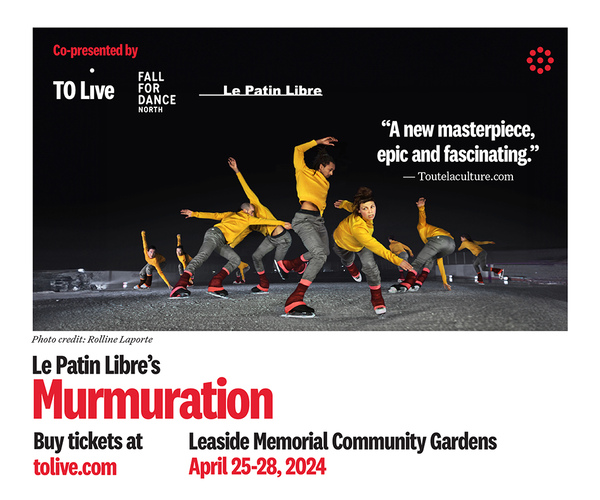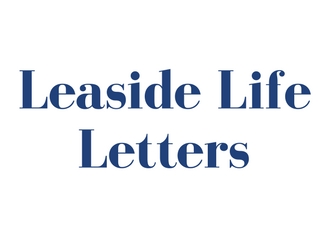“What Would Trace Manes say?”
First I would like to say to your reporter that if she is to criticize an organization that was established in 1953 and has played every regular season and playoff game at Trace Manes Park with thousands of kids participating in the league over the years (this year the league is at its capacity of 12 teams of 15 players, with more than 140 on the waiting list), then she should at least get the name correct. It is the Leaside Atom Baseball Association (LABA) not the “LAB”.
Over the years, including this one, the LABA has had many parent and community volunteers, some of whom have been involved in the league since the 1960s, first as players, then as scorekeepers, umpires, coaches and now as executives. The LABA employs Leaside youth as scorekeepers and umpires, most of whom previously played in the program. I myself played, coached my younger brother’s team for a season, and then when my two sons were of age to play came back to coach them and have continued to coach long after they graduated. Now both of my sons help me coach and also umpire games and have been scorekeepers in the past. My suggestion to the reporter is that if she is going to publicly criticize a volunteer community organization that has such a great impact on kids and youth in our community, she should at least consider its contribution. Thousands of kids have enjoyed learning and playing baseball, and hundreds of youth have benefited from the responsibility of umpiring and/or coaching.
I received your most recent publication on Wednesday, May 31st. On Thursday, June 1st, I coached a game and was the first person for the LABA to arrive at the diamond that night. When I arrived I noticed several pieces of garbage left near the stands along the 3rd base side, which my guess was they were left by the people I observed enjoying their lunch in the park earlier that day, when I was coming back from a meeting downtown. In the past I would have picked up the garbage, but, after reading your article decided to leave it. When the game was over and most of the people had left the park I went over to that area and noticed all of the garbage had been picked up. Not one Starbucks or Tim Hortons wrapper to be found. The reason I mention this is I do think your reporter needs to realize that not all garbage left in the park belongs to the permit holders and that the majority of visitors to the park, including LABA participants, do pick up at least their own garbage. I am sure that in the past and in the future there will be things left behind for after all we are humans and we do make the occasional mistake, but this is seldom done on purpose or with malice.
Rather than be negative like your reporter, I prefer to be positive and like to think that Trace Manes looks down from above with a big smile on his face when he sees all those people walking their dogs, enjoying their lunch, riding their bikes, throwing a football or just playing baseball in the park that was named in his honour.
Bruce Thornton,
LABA and North Leaside
North vs. South
Although the town of Leaside is uniform and unique, we North Leasiders have some significant differences from our neighbours living south of Eglinton Avenue. In terms of size and population, North Leaside makes up about one-third of Leaside. Many of the homes were built in the 1940s and are “newer” than those in South Leaside. We tend to get less press coverage because we have less of the overdevelopment and commercialization plaguing South Leaside. In fact, North Leaside consists almost entirely of single family, two-storey houses. Except for two streets (Glenvale and Broadway), we are spared many of the excess traffic problems of those streets to our south.
On the somewhat negative side, all of Leaside’s community facilities are in South Leaside. Except for Northlea School (where access is limited), there are no playground or sports facilities for children in North Leaside. North Leaside is very much under-represented on the board of the Leaside Property Owners’ Association, and the board members who actively negotiated the Sunnybrook Plaza development were all from South Leaside.
Frequent low-flying aircraft over Leaside is predominant over North Leaside (turning over this area). NAV Canada has formed a highway in the sky over our area for 4½ years. Mr. Oliphant, the MP who promised to address this problem prior to his election, has effected no significant improvements.
The North Leaside Traffic Com-mittee selected by Mr. Burnside is speaking for about five individuals and does not represent the majority of North Leaside. Their plan to close off entrances to Bayview from North Leaside disproportionately disadvantages us in Northwest Leaside. Although we resent the heavy traffic through North Leaside, as in the other areas in the city a reasonable traffic flow is essential.
I moved from South to North Leaside for a better quality of life. My opinion is supported by the statistics that show the escalation of house prices is greater in North than South Leaside.
Dan Buckley
Laird in Focus
It was with mixed feelings that I read the column in your July issue concerning the City’s “Focus on Laird” planning study.
The column’s general tone of approval was encouraging. The study is indeed an important step in the evolution of our community; all the more so given the rapid pace and transformational nature of the forces of change that can be expected over the coming years.
It was encouraging also to note the word of support for the City’s intention to involve the Design Review Panel in the process.
This panel, comprised of recognized leaders in various disciplines relevant to building design and city planning (architects, landscape architects, urban designers and engineers, etc.), provides independent, objective advice to city staff on matters of design that affect the public realm. It is a panel of expert commentators, not a public hearing tribunal. The last time I recall its advice being brought to bear on a Leaside project – the Smart Centre application at Laird and Wicksteed – the response from those who claimed to speak for the community was not so positive. Its tightly focused process of deliberation, for example, received specific and unmerited local criticism at that time.
I was disappointed, however, to note the contention that “the median is a problem.” This recently added feature on Laird Drive is said to be “very unfriendly for pedestrians and cyclists.”
Nothing could be further from the truth. To the contrary, the median is the best thing to happen to Laird Drive in our generation. It is good news for pedestrians and cyclists in particular.
Laird was originally a proud avenue featuring the head office buildings of local industrial operators that shipped their products out the back door by rail. The buildings were well designed and their grounds were attractively landscaped. With the advent of highways and the trucking age, Leaside’s large industrial plants gradually moved on and their office buildings emptied out. Commuter traffic increased. Laird Drive took on the characteristics of a service road whose main function was to carry traffic.
The efforts of a few Laird Drive property owners to contribute visual appeal to the streetscape were eventually overshadowed by a hodge-podge of uses that looked more suited to a back alley than to the main street of a community.
The median is part of an effort that was introduced within the past ten years to reverse that pattern of deterioration. It is part of an initiative to humanize Laird Drive, support pedestrian activity, and restore the streetscape to a feature of local pride.
In accordance with evidence built up by road design experts the world over, the landscaped median helps moderate the flow of vehicular traffic and create a safer and more pleasant environment for the public realm. It brings down the average speed of cars and trucks. It reduces the number of places where vehicles can execute risky left turns. It provides a point of refuge for pedestrians seeking to cross from one side of the street to the other.
Meanwhile, the number of points at which the median restricts the mobility of cyclists is exactly two – and, if desired, those can be addressed by simple modifications to the median’s curb structure.
And the benefits of the median are not limited to Laird.
Because it connects directly from Bayview to Laird, Parkhurst Boulevard is a local residential street that is uniquely victimized by cut-through commuter traffic. The sign at the eastern end prohibiting left turns onto northbound Laird generates repeated demands for stricter and more regular enforcement. The median that has been approved for the stretch of Laird located immediately north of McRae/Wicksteed will put an end to those left turns once and for all. This will substantially reduce Parkhurst’s attractiveness as a commuter route and make it a safer street along its full length.
Not long ago we thought of streets only as conduits for vehicles to get around on. Increasingly, planners are now emphasizing the important role of streets as the defining elements of communities – apart from their function in moving cars and trucks. The Laird study is all about making the most of the potential to make Laird Drive serve the community’s interests in more than one way.
We can wish away the changes that are coming as our community grows, or we can take advantage of the opportunity to channel those changes into improvements that will make our community a better place. The process is not aided by fostering a misunderstanding of the improvements that are already under way.
Respectfully,
John Parker
We welcome all Letters to the Editor and/or feedback from readers


